Part of the Henchy Family Gardens series — where stories and seedlings grow together.
|
Part of the Henchy Family Gardens series — where stories and seedlings grow together.
|

As temperatures drop and the outdoor beds rest, Henchy Family Gardens comes alive indoors. Winter is the perfect time to nurture a few leafy projects, refresh your soil knowledge, and keep your hands in the dirt — even if it’s just a pot on the windowsill.

Winter mornings in Mother’s Greenhouse – where the light still grows.
Best herbs for winter: Basil, thyme, parsley, mint, chives.

Fresh life on the sill – microgreens ready in two weeks!
These nutrient-packed sprouts grow fast, ready in just 10–14 days.
What to grow: Broccoli, radish, arugula, or kale.
Perfect toppings for soups, wraps, or omelets — fresh garden flavor in midwinter.
Dry indoor air can stress plants. Try this:
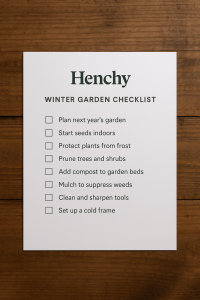
Poppa Sunflower’s handy winter garden checklist.
Short winter days can slow growth — but light management helps:
Before deep winter sets in:
Bonus Project: Plant garlic cloves or hardy bulbs now — they’ll reward you with early shoots come spring.

From our greenhouse to your heart – warmth, comfort, and garden love.
Winter is the gardener’s “thinking time.” Record what thrived and what struggled this year. Sketch next year’s bed layout for crop rotation. Browse seed catalogs and order early before the spring rush.
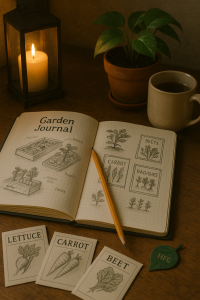
Winter is for reflection – a quiet time to dream and draw next season’s beds.
Gardening in winter isn’t about slowing down — it’s about shifting focus. By tending small projects indoors and preparing your soil outdoors, you’ll nurture steady growth through every season.
Growth never stops — it just changes rhythm.

Morning warmth from the heart of Henchy Family Gardens.
Practical guidance with a warm, storybook heart — from our Jersey Shore greenhouse to yours.

As the air crisps and the days shorten, many gardeners wonder: how long can tender crops really last in an unheated greenhouse? If you live in Zone 7 — like us here at Henchy Family Gardens on the Jersey Shore — you can stretch your growing season a bit longer than you might think… but not forever. Let’s explore what really happens in that cozy glass shelter when the chill starts to creep in.
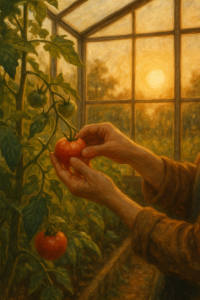
In gardening, “tender” means frost-sensitive — plants that shiver at the first cold breath of fall. Think: tomatoes, peppers, basil, cucumbers, eggplants, and summer squash. Once greenhouse temps dip below about 50 °F (10 °C), these plants slow down, sulk, and eventually suffer.
An unheated greenhouse acts like a sun-powered blanket: by day, sunlight warms the air and soil; by night, that stored heat escapes. A sunny October afternoon can lift inside temps into the 70s °F, but after sunset they slide back toward the 40s °F. That daytime cushion buys a few extra weeks — but it won’t fend off hard cold snaps.
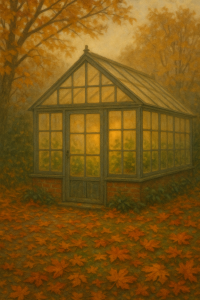
Once nighttime greenhouse temps regularly fall below 45–50 °F, it’s time to thank your summer superstars and welcome the cool-season crew: spinach, kale, lettuces, radishes, carrots, and hardy herbs like parsley and chives. Think of it as the changing of the garden guard — vibrant summer vines hand the baton to steady winter greens.
| Crop Type | Likely in Unheated GH (Zone 7) | Notes |
|---|---|---|
| Tomatoes & Peppers | Until late Oct / early Nov | Pick promptly before <45 °F nights |
| Basil & Cucumbers | Mid- to late October | Very frost-sensitive; expect early slowdown |
| Eggplant | Late October | Fruiting often stalls before real cold |
| Lettuce, Spinach, Kale | All winter (with cover) | Thrive in cool temps and short days |
| Root crops (carrot, radish) | Into winter | Excellent for overwintering; sweeten with frost |

Every fall, we think of our greenhouse as a storyteller’s cabin — warm by day, peaceful by night. The plants rest, the gardener reflects, and the cycle quietly prepares to begin again. Let tender crops linger while they can, but embrace the season’s rhythm. In the garden, every ending is also a beginning. 💛
Written by Raquel Henchy — Keeper of Seeds & Stories
Where stories and seedlings grow together. 🌿
Henchy Family Gardens

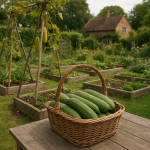
As golden autumn light settles over your Jersey Shore beds, it’s time to bring your loofah vines from trellis to sponge. This warm, whimsical guide shows you how to harvest Luffa aegyptiaca before frost, finish curing indoors, and create gorgeous natural sponges — practical for your garden-to-table rhythm and mindful of a Type‑2‑diabetic‑friendly lifestyle.
On The Jersey Shore, NJ, first frost typically arrives in late October to early November — your loofah’s finish line. Loofahs like a long, warm season of about 200 frost-free days. If a hard frost is forecast and your gourds are still partly green, harvest early to prevent damage.
 🌞 Processing & Drying After Harvest
🌞 Processing & Drying After Harvest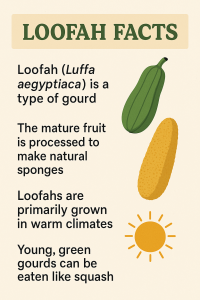 🌿 Conditions
🌿 ConditionsTypical cure time: 2–4 weeks, depending on humidity.
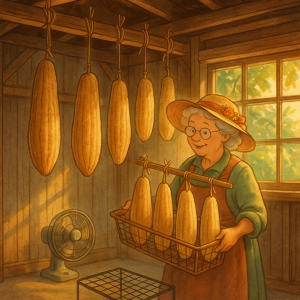 If harvested damp or slightly green, let loofahs rest indoors for 24 hours in a warm, dry room, then move them to the garage/greenhouse to finish.
If harvested damp or slightly green, let loofahs rest indoors for 24 hours in a warm, dry room, then move them to the garage/greenhouse to finish.
Enjoy beautiful, natural eco-sponges for baths, dishes, and gift baskets.
The loofah is a cucurbit (family Cucurbitaceae) alongside cucumbers, squash, and pumpkins. As it matures, the inner flesh forms a dense fibrous network — the sponge you reveal after peeling and drying.
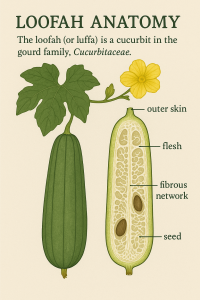
Each loofah’s journey — from vibrant vine to golden sponge — is a tiny love letter from your garden. 💛
As the evenings grow crisp here at the Jersey Shore, gardeners in USDA Growing Zone 7 — including our community in 08731 — start hearing those familiar words from local forecasts: “Frost Watch.”
But what does that really mean, especially when your thermometer still reads 44°F? Let’s dig in together and uncover the science, the signs, and the simple ways to protect your garden family from Jack Frost’s surprise visits.

“Frost is the garden’s whisper that every ending holds a promise — that rest is not the death of beauty, but its preparation to bloom again.”
— Henchy Family Gardens
“When the air turns still and silver, even the smallest leaf remembers how to sparkle.”
A frost happens when air temperatures drop to around 32°F (0°C) or below, and moisture in the air crystallizes directly onto plant surfaces — those tiny ice crystals you see on petals and leaves in the morning.
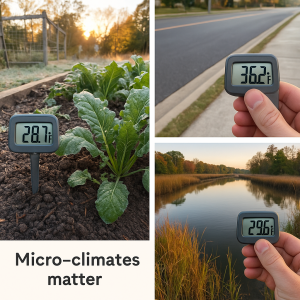
Light Frost (29–32°F): May damage or kill tender plants such as basil, peppers, or impatiens.
In our coastal region, the average first frost arrives around mid-to-late October, and the last spring frost usually passes by mid-April. That gives gardeners roughly a 200-day growing season — long enough to enjoy multiple harvests and plenty of flowers before the cold sets in.
It might sound strange, but a frost watch can be issued even when the forecast temperature is in the low-to-mid 40s. Here’s why:
Think of it as a quiet, invisible chill that creeps in overnight — gentle but enough to nip tender leaves if left uncovered.
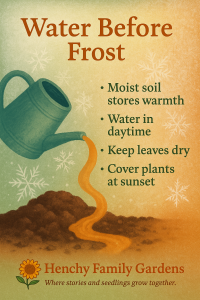

At Henchy Family Gardens, we see frost as more than just a seasonal warning — it’s a gentle reminder that every garden (and every gardener) moves through seasons of rest and renewal.
So when that cool air rolls in and your garden glistens under the morning dew, take a deep breath. Protect what you can, learn what nature teaches, and trust that spring will always follow.
🌻 Henchy Family Gardens
“Where stories and seedlings grow together.”

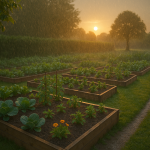
Whether you’re growing in raised beds, rows, or containers, mapping out your garden before planting sets you up for a more abundant, beautiful, and stress-free season.
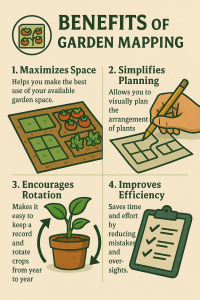
Garden mapping is simply creating a visual layout of your garden space before planting. It can be as simple as a sketch in a notebook or as advanced as a digital plan. A map helps you organize where each crop will grow and allows you to make thoughtful decisions instead of planting on the fly.
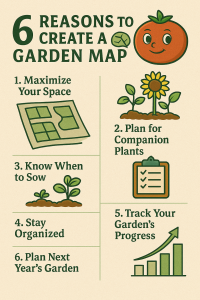 1. Maximizes Space
1. Maximizes SpaceNo more guessing where to put your tomatoes or realizing too late that your cucumbers crowded out your lettuce. Mapping ensures you use every inch efficiently.
Planting the same crop in the same spot year after year can drain the soil and attract pests. A map lets you track what grew where so you can rotate properly, keeping soil healthy and plants strong.
It’s easy to underestimate how large plants will get. A map keeps you from planting too close together, improving airflow and reducing disease.
Tall plants like corn or sunflowers can cast shade on smaller crops. Mapping ensures each plant gets the right amount of light.
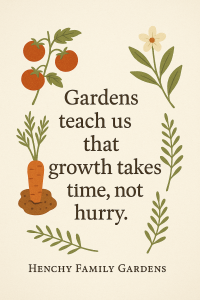
Want to plant spinach in spring, then beans in the same spot later? A map helps you plan out the timing and space for multiple plantings.
Your map becomes a garden diary. Looking back helps you see what worked, what didn’t, and how to improve next season.


Garden mapping is more than just organization — it’s a way to set yourself up for success, abundance, and peace of mind in the garden.
Think of it as your blueprint for a fruitful season. 🌻
✨ Just like tending your plants, tending your plan brings better harvests.
Share your garden map with us! Tag @henchygardens or visit
HenchyGardens.com 🌿henchyfamilygardens
 Seed Starting Timeline (Zone 7a)
Seed Starting Timeline (Zone 7a)Your month-by-month guide from cozy indoor starts to thriving beds 🌿
In Zone 7a (hello, Jersey Shore friends! 👋), the gardening year is anchored by an average last spring frost in mid-April and an average first fall frost in early November. Use those bookends to plan your sowing. This guide gives you a clear, beginner-friendly timeline: what to start indoors, when to direct-sow outside, and how to pace your season.
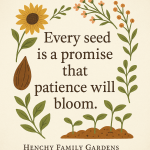
Use the chart below to time indoor sowing and transplants. “LSF” = last spring frost.
| When | Start Indoors | Direct-Sow Outdoors | Notes |
|---|---|---|---|
1–12 wksbefore LSFlate Jan–early Feb |
Onions (seed), leeks, celery |
Long lead-time crops;bright light essential. |
|
8–10 wksbefore LSFmid–late Feb |
Broccoli, cabbage, cauliflower, kale, chardflowers: snapdragon |
Cool-season brassicas like a head start. |
|
6–8 wksbefore LSFlate Feb–early Mar |
Tomatoes, lettuce, parsley; flowers: marigold |
Peas, spinach, radisharugula if soil workable |
Sow peas outdoors once soil is ~40–45°F. |
4–6 wksbefore LSFmid–late Mar |
Peppers, eggplant, basil (warmth + grow lights) |
Carrots, beets, turnips, more spinach/lettuce |
Bottom heat (75–80°F) speeds pepper/eggplant germination. |
2–4 wksbefore LSFlate Mar–early Apr |
Cucumbers* (optional), summer squash* (optional), zinnias* |
Potatoes, scallions, cilantro, dill; succession radish/lettuce |
*Start in large cells; they dislike root disturbance. |
1 to 2 wks after LSFmid–late Apr |
Harden off 7–10 days prior |
Beans, corn once soil warms; direct cucumbers/squash |
Protect with row cover if nights dip below 50°F. |
2–4 wksafter LSFApr- May |
Melons, okra, sunflowers; second sowing of beans/corn |
Warm soil = faster germination and fewer setbacks. |
Start onions/leeks/celery indoors. Inventory seeds, set up lights, test germination on older seed.
Start brassicas, tomatoes, and herbs indoors. Direct-sow peas, spinach, and radish when soil is workable.

Harden off transplants. After last frost, plant beans, corn, cucumbers, and squash. Protect on chilly nights.
Transplant tomatoes/peppers/eggplant. Direct-sow melons/okra/sunflowers. Mulch 2–3″ to conserve water.
Succession-sow beans, corn, cucumbers. Start fall brassicas indoors late July (6–8 wks before Sept transplant).
Transplant fall brassicas. Direct-sow carrots, beets, spinach for fall harvest. Start lettuce every 2 weeks.
Finish fall plantings early Oct. Add row covers for frost. Plant garlic late Oct–Nov for next summer harvest.
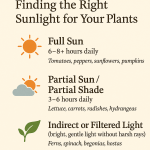
Crop |
Start Indoors |
Transplant/Direct-Sow |
Notes |
|---|---|---|---|
Tomato |
6–8 wksbefore LSF |
After LSF(soil 60°F+) |
Harden off;mulch; stake early. |
Pepper / Eggplant |
8–10 wksbefore LSFw/ heat mat |
1–2 wks after LSF(nights 55°F+) |
Love warmth;slow to start. |
Cucumber / Squash |
2–3 wksbefore LSF(optional) |
At/after LSF(or direct-sow) |
Use large cells;minimal rootdisturbance. |
Beans / orn |
Direct-sowafter LSF(warm soil) |
Succession every2–3 weeks. |
|
Lettuce / Greens |
4–6 wksbefore LSF |
Direct-sow 4–6 wksbefore LSF onward |
Bolt-prone in heat;partial shade helps. |
Carrot / Beet |
Direct-sow 4–6 wksbefore LSF |
Fine seed; keep surface evenly moist. |
|
Broccoli / Cabbage / Kale |
8–10 wks before LSF (spring) & late July (fall) |
Transplant 2–4 wks before LSF (spring) & Sept (fall) |
Row cover helps with pests. |
Herbs (Basil, Parsley, Dill) |
Basil 4–6 wks; Parsley 8–10 wks; Dill direct-sow |
Basil after LSF; Dill anytime cool; Parsley before/after LSF |
Basil loves heat; dill prefers cool shoulder seasons. |
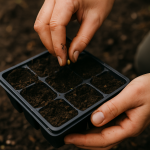
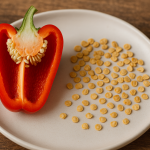
Fall Bed Clean-Up: What to Pull, What to Leave
Preparing your garden for rest — the gentle way 🍂🌿

Autumn is nature’s pause button — a time to slow down, reflect, and prepare for renewal. As leaves tumble and blooms fade, gardeners everywhere face the same question: what should I clean up, and what should I leave behind? 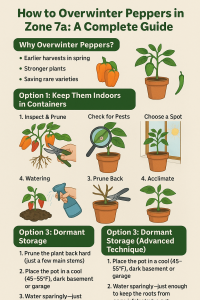
The answer depends on your goals: healthier soil, fewer pests, and more life in the spring. Here’s how to clean up your garden beds like a pro — without stripping away the magic of winter’s rest.
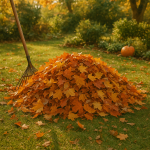
A mindful fall cleanup sets the stage for a thriving garden next year. It helps prevent disease, balances soil health, and protects pollinators that overwinter in your yard. The key is knowing the difference between what’s messy and what’s meaningful.
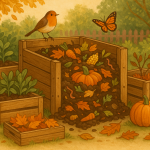
Some plants have finished their work for the season — and it’s best to give them a graceful exit. Removing diseased or invasive growth keeps your beds healthy through the winter.
Not everything needs to go! Leaving certain plants and debris in place protects wildlife, feeds the soil, and adds beauty to your winter landscape. Think of it as tucking your garden in under a cozy quilt.
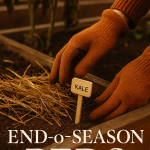
Before winter sets in, treat your soil to a nourishing meal. Fall is the perfect time to top-dress with compost, shredded leaves, or well-rotted manure. As these materials decompose over winter, they enrich the soil naturally — no digging required.
Leaving a few untidy corners is a kindness to nature. Hollow stems house native bees, leaf piles shelter butterflies and frogs, and seed heads feed the birds. A “perfectly clean” garden may look neat — but it can feel empty to the creatures that make it alive.

From the Garden to Your Body: Finding Balance the Natural Way
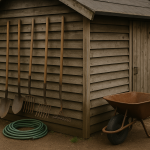
At Henchy Family Gardens, we believe the lessons of the garden are also lessons for life. Just as plants need the right balance of sunlight, water, and rest to thrive, our bodies need balance too — and one of the biggest pieces of that puzzle is cortisol.
Cortisol, often called the “stress hormone,” isn’t the villain it’s sometimes made out to be. In healthy amounts, it helps us rise with the sun, fuels our energy, and supports focus. But just like overwatering a plant can cause roots to rot, too much cortisol for too long can leave us anxious, tired, and out of rhythm.
The good news? Nature shows us how to restore balance. Here’s a simple, natural daily routine — rooted in the wisdom of the garden — to keep cortisol steady and your body flourishing.
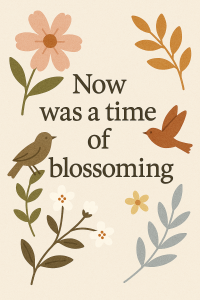

Soak in natural light: Just as flowers open with the sunrise, let the light reset your body’s rhythm. Step outside or open your blinds first thing.
Gentle movement: Stretch, practice yoga, or take a light walk. Think of it as loosening the soil before planting — you’re preparing your body without overworking it.
Balanced breakfast: Fuel with a mix of protein, healthy fats, and whole grains — the way a garden thrives on rich, balanced soil.
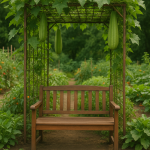
Pause for breaks: Plants rest in the shade; so should we. Step away from screens, breathe deeply, or stroll outdoors to reset your energy.
Stay watered: Just as no garden thrives without rain, our bodies need hydration to keep cortisol from rising.
Eat mindfully: Choose colorful veggies, lean proteins, and whole grains — your “garden harvest” to nourish both body and mind.
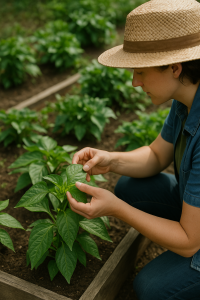
Gentle evening activity: Skip high-intensity workouts late in the day. Instead, tend your garden, take a slow walk, or do light stretching — much like the garden winds down as the sun sets.
Practice calm: Deep breathing, journaling, or quiet reflection is the compost of the soul — feeding your inner garden for tomorrow’s growth.
Wind down naturally: Dim the lights, put away screens, and trade scrolling for reading, listening to music, or reflection.
Prioritize sleep: Just as soil needs rest to restore nutrients, our bodies restore balance through 7–9 hours of deep, quality sleep.
In the garden, joy comes from little things: a bloom opening, the hum of bees, the smell of herbs. The same is true in life. Laughter, connection, music, and time in nature are all natural ways to lower cortisol and nourish your inner garden.
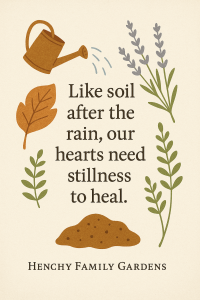
Here in the Henchy Family Gardens, we’ve learned that balance is everything. Cortisol is not something to fear — it’s part of your natural growth cycle. But by tending to your body as lovingly as you tend the soil, you’ll find resilience, calm, and joy taking root.
🌱Together, let’s grow healthy gardens and lives one day at a time. 🌱
🌿A Note from the Garden🌿
🌿Keep your garden thriving, stop mildew before it spreads 🌿
🍃Powdery mildew might sound harmless, but this common fungal disease can quickly blanket leaves, weaken plants, and spoil your harvest. The good news? You can prevent it and even reverse early outbreaks using gentle, garden-safe methods that align perfectly with the Henchy Family Gardens philosophy: care, consistency, and connection. 🍃

Powdery mildew is a fungal infection that looks like a soft white or gray coating on plant leaves and stems — almost as if someone dusted your garden with flour. It thrives in **warm, dry days** paired with **cool, humid nights**, making it especially sneaky during late spring and summer transitions.
Preventing powdery mildew starts long before you ever see it. Creating the right growing environment — with airflow, spacing, and sunlight — keeps your plants strong and resilient.

Already spotted that white fuzz? Don’t panic. You can treat powdery mildew safely using simple, natural methods that protect pollinators and your soil.
Mix 2 tsp neem oil + 1 tsp mild soap in 1 quart of water. Spray weekly on affected leaves. Safe for most vegetables and ornamentals.
Combine 1 tbsp baking soda + ½ tsp liquid soap + 1 gallon of water. Spray every 5–7 days. Adjust strength for tender plants.
Mix 1 part milk to 2 parts water. Apply in full sun twice a week. Works surprisingly well for cucumbers, squash, and zucchini!

Healthy ecosystems resist disease naturally — think of your garden as a community, not a battlefield. 🌾

If mildew overwhelms late-season plants, sometimes the kindest thing you can do is compost them and prepare for next year. Clean up all debris, disinfect tools, and rest the soil with a compost blanket for winter. Every garden has seasons of loss and renewal — that’s part of the story. 💛